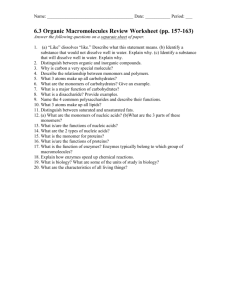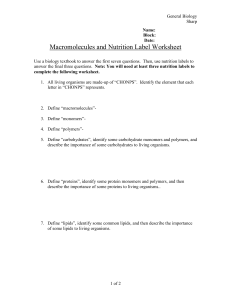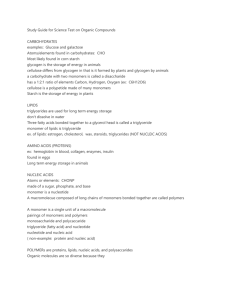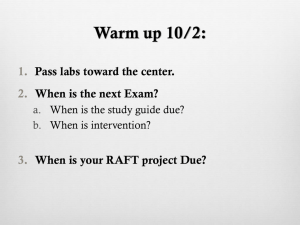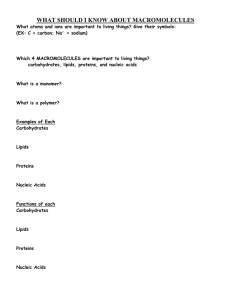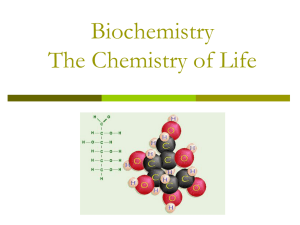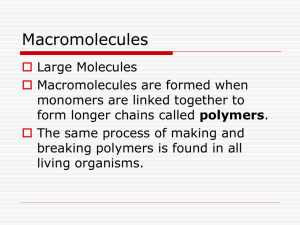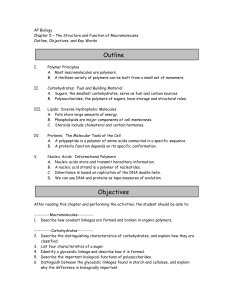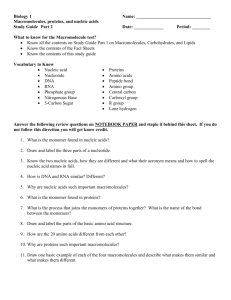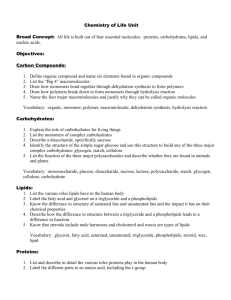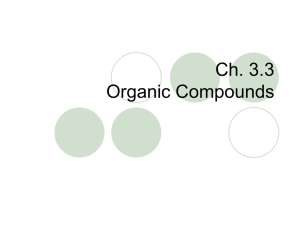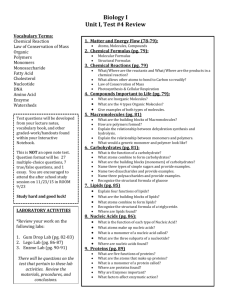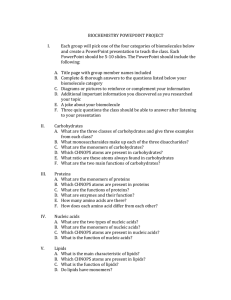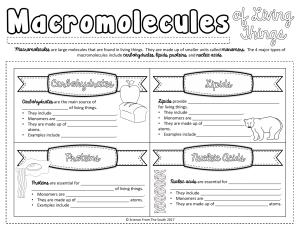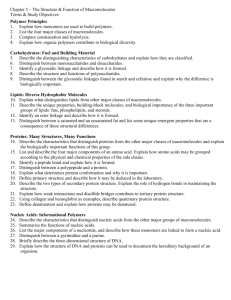ExtraCredit-Molecules
advertisement
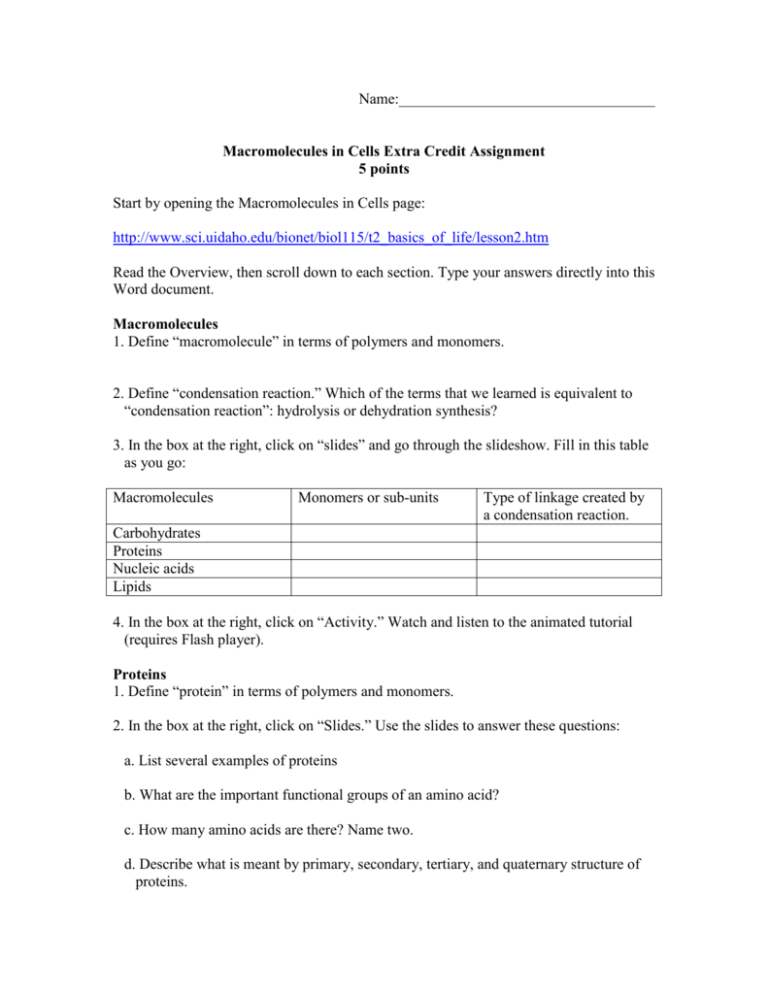
Name:__________________________________ Macromolecules in Cells Extra Credit Assignment 5 points Start by opening the Macromolecules in Cells page: http://www.sci.uidaho.edu/bionet/biol115/t2_basics_of_life/lesson2.htm Read the Overview, then scroll down to each section. Type your answers directly into this Word document. Macromolecules 1. Define “macromolecule” in terms of polymers and monomers. 2. Define “condensation reaction.” Which of the terms that we learned is equivalent to “condensation reaction”: hydrolysis or dehydration synthesis? 3. In the box at the right, click on “slides” and go through the slideshow. Fill in this table as you go: Macromolecules Monomers or sub-units Type of linkage created by a condensation reaction. Carbohydrates Proteins Nucleic acids Lipids 4. In the box at the right, click on “Activity.” Watch and listen to the animated tutorial (requires Flash player). Proteins 1. Define “protein” in terms of polymers and monomers. 2. In the box at the right, click on “Slides.” Use the slides to answer these questions: a. List several examples of proteins b. What are the important functional groups of an amino acid? c. How many amino acids are there? Name two. d. Describe what is meant by primary, secondary, tertiary, and quaternary structure of proteins. primary: secondary tertiary: quaternary: 3. In the box at the right, click on “Activity.” Describe what you had to do to build a polypeptide (short protein). Lipids 1. Define several characteristics of lipids. 2. In the box at the right, click on “Slides.” Use the slides to answer these questions: a. What are the three main types of lipids? b. What are the two main parts of a lipid? c. Structurally, how do saturated and unsaturated fatty acids look different? d. What are the important parts of a phospholipid? 3. In the box at the right, click on “Activity.” Describe what you had to do to build a triglyceride. Carbohydrates 1. Define “carbohydrate” in terms of polymers and monomers. 2. In the box at the right, click on “Slides.” Use the slides to answer these questions: a. What are some nutritional roles of carbohydrates? b. What is the general chemical formula for all monosaccharides? c. What is an oligosaccharide? d. What are some examples of polysaccharides? 3. In the box at the right, click on “Activity.” Describe what you had to do to build a carbohydrate. Nucleic acids 1. Define “nucleic acid” in terms of polymers and monomers. 2. In the box at the right, click on “Slides.” Use the slides to answer these questions: a. Where are DNA and RNA found in cells? b. Which molecules form the backbone of nucleic acids? c. What are the five nitrogenous bases found in DNA? d. What are two nucleotides that play other roles in the cell? e. What is one important way in which DNA and RNA are different? 3. In the box at the right, click on “Activity.” Describe what you had to do to build a nucleic acid.
